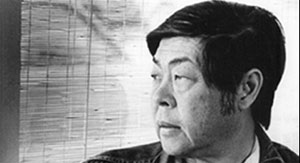(Buy Chan is Missing at Amazon, and visit the official website of the Asian American International Film Festival for screening details.)
By the time he made Chan is Missing, Hong Kong native Wayne Wang had graduated from the California College of Arts and Crafts, gotten his unofficial education in cinephilia attending screenings at Berkeley’s Pacific Film Archive, returned to Hong Kong for an unfulfilling stint directing a popular TV soap opera, and finally landed back in the Bay Area, working in San Francisco’s Chinatown teaching English to immigrants and dreaming up the story that would evolve into his debut feature. With grants from the NEA and AFI totaling a little over $20,000, plus time and services donated by his cast and crew and various Chinatown locals, Wang made the film and then released it on the festival circuit in 1982. It was picked up by New Yorker Films and became a minor art-house success. Chan is Missing launched Wang on a long, varied, and still-evolving career, and attained landmark status as the first theatrically distributed feature film directed by and starring Asian Americans.
That it’s still arguably the best Asian American film testifies not only to Wang’s talent, but also his timing. In retrospect, Chan is Missing can be seen as part of a broad wave of American independent cinema that emerged after the social movements of the late ’60s and ‘70s, when culturally marginalized groups decided to make their own movies outside the Hollywood system, but before the institutionalization of “indie film” began in the late ‘80s and early ‘90s. Like Barbara Loden’s Wanda, Bill Gunn’s Ganja & Hess, Charles Burnett’s Killer of Sheep, and other key works of its time, Chan remains interesting and relevant today due to its fusion of cultural and aesthetic radicalism. Artists as well as witnesses or spokespeople, these directors were as influenced by the great liberating movements in post-war global film culture—Italian Neorealism, cinema verité, the various New Waves—as they were by ‘60s social activism, and their movies explored the boundaries of cinematic form even as they expanded the subject matter of American film. Today, when almost every major city in the U.S. boasts entire film festivals devoted to each racial, cultural, and sexual slice of the demographic pie, the topics of these earlier movies have lost their novelty, but the freshness of their discoveries still comes through. And in a time when yuppified, corporatized “indie” filmmakers, critics, programmers, and audiences alike treat recognition by the mainstream as the Holy Grail, their intransigent unwillingness to play by the rules remains invigorating, even inspiring.
Chan is structured as a detective story. Two Chinese American cabdrivers, middle-aged Jo (Wood Moy) and his sidekick, young Steve (Marc Hayashi), go looking for Jo’s friend Chan Hung, who disappeared with $4,000 the pair had given him to buy them independent taxi operator’s licenses. Jo and Steve trek through Chinatown, talking to people who knew the missing man—a sociologist, a restaurateur, a language-school director, Chan’s estranged wife and daughter, and many others—and the more they learn about Chan, the less they know who he is. Everyone who ever met Chan has a very different idea of him. Is he a helpless immigrant unable to assimilate? A shrewd operator? An honest man? A scientific genius? A political activist? A paranoiac? All of the above? Over the course of his investigation, Jo begins to realize, like the reporter in Citizen Kane, that nobody’s life can be summed up with a single word or phrase.
Does Jo ever find Chan? I don’t want to spoil it for those who haven’t seen the movie yet. Let’s just say that Chan interests Wang less as a character than as what the semioticians would call a “floating signifier”: a sign without a fixed meaning, a blank slate allowing almost any interpretation to be inscribed upon it. The mystery of the missing man is a red herring, a MacGuffin, a pretext. Like the disappearance of Anna in Antonioni’s L’Avventura, it’s an excuse to get to the real story underneath the surface story. The heart of the film has to do with Jo—and through him, the audience—coming to terms with the full complexity of the Chinese American experience. And just as the missing Chan can’t be classified by any simple label, the absurdity of pigeonholing any subculture (even by the use of such phrases as “the Chinese American experience”) becomes, by the end, the point of the movie, and the questions the story raises—who is Chan? and what does it mean to be Chinese (or Asian) American?—are left dangling, as Jo learns to live with mysteries rather than trying to solve them.
And yet, if the message of Chan is Missing is a sort of intellectualized postmodern trick—the message is that there is no message, the solution to the mystery that there is no solution—the feel of the film is something very different. It’s loose-limbed, light on its feet, sly and jokey, often documentary-like in its spontaneity and openness to experience. Most of the cast members (though not Moy and Hayashi, both Bay Area Asian American theater pros) are nonprofessionals—real Chinatown locals playing Chinatown locals—and their semi-improvised interactions have the unpredictable ebb and flow of real life caught on the fly. This dynamic tension between Wang’s controlling intellect and the freedom of his way of seeing the world makes Chan a richly pleasurable viewing experience more than two decades after it was made. (The same tension informs every stylistic choice in the film; note how seamlessly the cinematography, by doc vets Michael Chin and Curtis Choy, blends exquisitely composed chiaroscuro studies with verité realism.)
What gives Chan is Missing its status as a seminal Asian American film, beyond the fact of its historical “firstness,” is how it encodes and encapsulates so many aspects of Asian American life that later filmmakers (and novelists and playwrights) would confront in their work. Many of the story’s points of reference (FOBs versus ABCs, PRC loyalists versus pro-Taiwan-independence factionalists) are specific to Chinese Americans, but many more—the loss of social status that comes with immigration, the pleasures and pitfalls of assimilation, the generation gap, the endless self-questioning about “identity”—are universal to the post-immigrant experience anywhere. Wang covered all these bases in Chan, and he did it with a seeming ease and gracefulness and an utter lack of self-seriousness or heavy-handedness that his successors can learn from (and that, truth be told, Wang has never fully equaled in his subsequent films).
So while Chan deserves its rep as a historical landmark, no landmark could be less imposing. If it’s an ancestor or forbear of present-day Asian American cinema, think of it as a roguishly charming uncle with a mischievous twinkle in his eye. Wang recently returned to his low-budget roots with two new features, A Thousand Good Years of Prayers and The Princess of Nebraska, that are currently making the festival rounds (Nebraska is tonight’s opening night film at the 2008 Asian American International Film Festival). But check out Fox Lorber’s well-produced 2006 DVD release of Chan when you get a chance, or see it next time it plays at your local rep house. At twenty-six years of age, the movie still feels like the new kid on the block.
— Nelson Kim













Nancy Wong
“The mystery of the missing man is a red herring, a MacGuffin, a pretext”
Actually, for me, the “MacGuffin” in “Chan is Missing” is who is “Wong Cheen” (sic) that the film is dedicated to (first title of the film).
Sincerely,
Nancy Wong, aka “Wong Cheen” or Wong Ch’ien